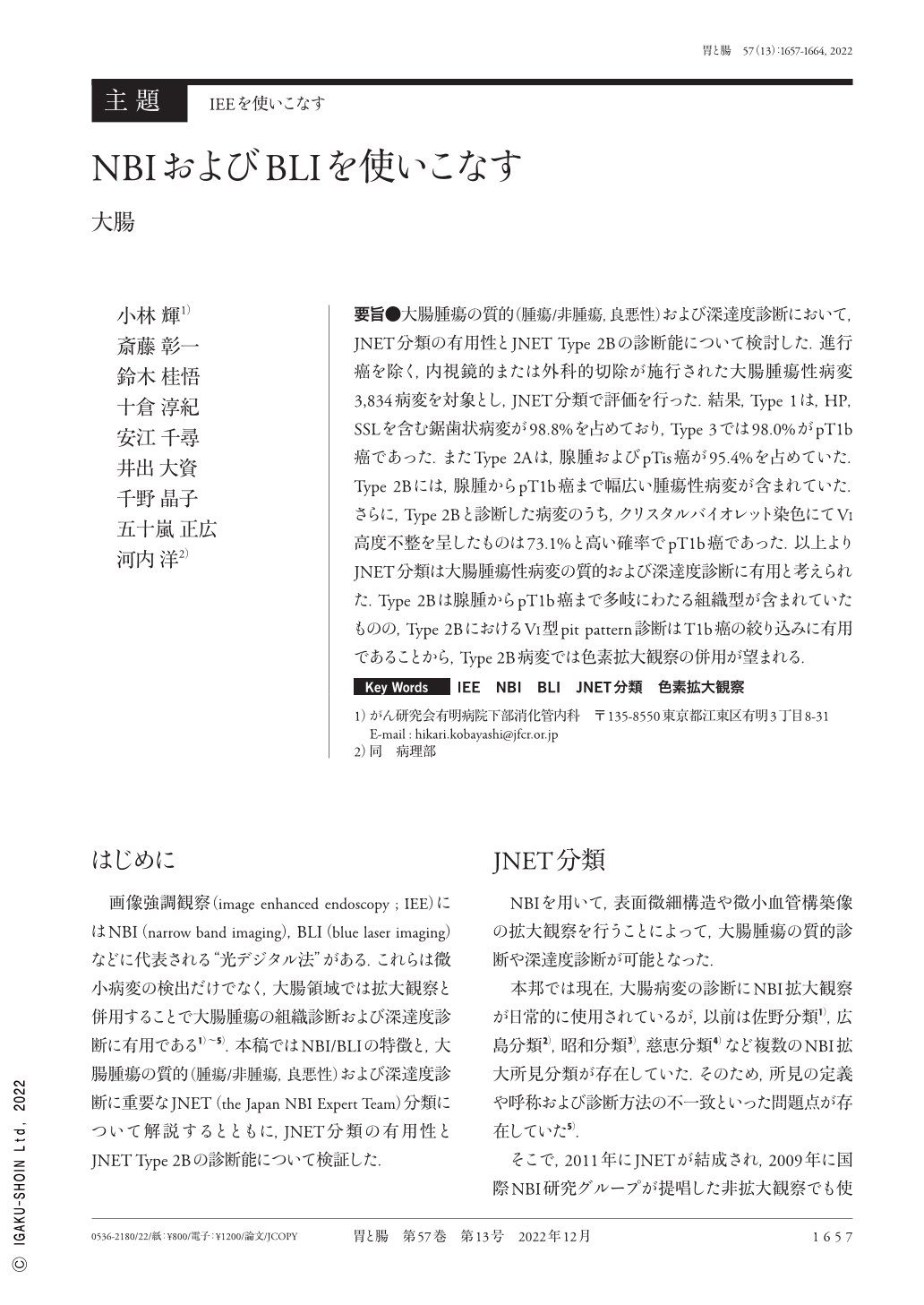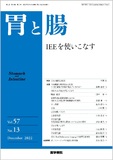Japanese
English
- 有料閲覧
- Abstract 文献概要
- 1ページ目 Look Inside
- 参考文献 Reference
- サイト内被引用 Cited by
要旨●大腸腫瘍の質的(腫瘍/非腫瘍,良悪性)および深達度診断において,JNET分類の有用性とJNET Type 2Bの診断能について検討した.進行癌を除く,内視鏡的または外科的切除が施行された大腸腫瘍性病変3,834病変を対象とし,JNET分類で評価を行った.結果,Type 1は,HP,SSLを含む鋸歯状病変が98.8%を占めており,Type 3では98.0%がpT1b癌であった.またType 2Aは,腺腫およびpTis癌が95.4%を占めていた.Type 2Bには,腺腫からpT1b癌まで幅広い腫瘍性病変が含まれていた.さらに,Type 2Bと診断した病変のうち,クリスタルバイオレット染色にてVI高度不整を呈したものは73.1%と高い確率でpT1b癌であった.以上よりJNET分類は大腸腫瘍性病変の質的および深達度診断に有用と考えられた.Type 2Bは腺腫からpT1b癌まで多岐にわたる組織型が含まれていたものの,Type 2BにおけるVI型pit pattern診断はT1b癌の絞り込みに有用であることから,Type 2B病変では色素拡大観察の併用が望まれる.
In this study, the efficacy of the endoscopic finding characteristics by JNET(the Japan Narrow-Band Imaging Expert Team)classification was examined, including the diagnostic performance of JNET type 2B.
The results revealed that JNET type 1 classification was a very reliable indicator for HP(hyperplastic polyp)/SSL(sessile serrated lesion), and type 3 was a reliable indicator for T1b cancer. The specificity of type 2B was relatively higher than that of type 2A. In the examination of the pit pattern for type 2B, the ratio of type VI mild irregularity and type VI severe irregularity pit patterns was high. The type VI subclassification for type 2B was useful for distinguishing deep submucosal invasive cancer.
Thus, the JNET classification was deemed as a useful method for colorectal lesion characterization. However, the pit pattern should be considered as an additional method for diagnosing lesions as type 2B prior to treatment as there are various histological types of JNET type 2B.

Copyright © 2022, Igaku-Shoin Ltd. All rights reserved.


